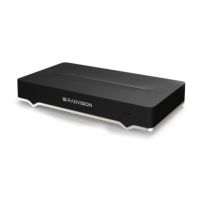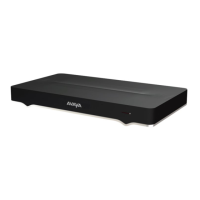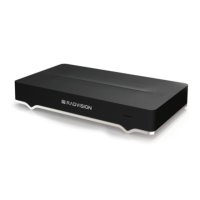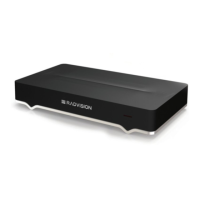7. Get started with the basic configuration to use the XT Series, as described in Initial
Configuration of the XT Series on page 78, including running the quick setup wizard, and
defining network settings.
8. (Recommended) You can prevent users from altering advanced settings by changing the
default administrator PIN code, and you can optionally set a user PIN code to protect basic
settings too (see
Setting PIN Codes for the XT Series on page 156).
To change the default login settings for the XT Series web interface, see
Securing Web
Access to the XT Series on page 157.
9. If your XT Series is an endpoint, not just a server, configure your camera and microphone
settings, as described in:
• Configuring Cameras on page 100
•
Configuring Microphones on page 104
10. If necessary for your deployment, configure your advanced network and call settings, as
described in Configuring Advanced Network Settings on page 116. This includes, for
example:
• Setting the IP address
• Configuring the system in a SIP deployment
• Configuring call settings
• Enabling NAT and Firewall Traversal
• Registering the system with the gatekeeper
• Configuring the system to use an LDAP directory
For more information about deployment setups, see
Planning the Topology of the Avaya
Scopia
®
XT Series Deployment on page 24 and the Avaya Scopia
®
Solution Guide.
11. (Optional) If necessary for your organization, you can secure videoconference sessions via
encrypted connections and TLS certificates (see
Securing your XT Series on page 156).
Important:
Using encryption is subject to local regulation. In some countries it is restricted or limited
for usage. For more information, consult your local reseller.
12. If your deployment includes Scopia
®
Management, you can set up remote monitoring and
management of the XT Series using SNMP messages to send alerts to a central SNMP
server (see Sending Status with SNMP on page 151)..
13. You can remotely backup and restore the XT Series configurations via Scopia
®
Management, as described in
Enabling System Logs and Remote Initialization on page 175,
or use the same configuration files to duplicate the same settings across multiple endpoints
in an organization.
14. To update your software, see
Updating the XT Series on page 153. Some upgrades require
an updated license.
April 2015 Avaya Scopia
®
XT Series Deployment Guide 23
Comments? infodev@avaya.com

